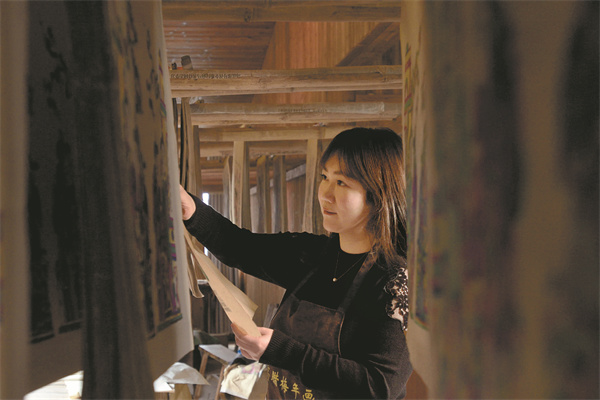

Local materials
It takes about six months, from creating a new design to delivering a Tantou-style New Year picture. All materials and processes used in the production are localized in Hunan. The paper and pigments used are made of the moso bamboo that is native to China.
"The raw paper is thick and strong, with a creamy yellow color," Zhong says.
Before printing, the paper needs to be steamed to increase its toughness and flexibility and is coated with a glue concocted out of a fine, white natural mineral, so that the paper can better take in and show colors with vivid effect.
"After digging up soil from the mountains, we need to crush it with a large and heavy wooden hammer on a workbench, and then put it in a water tank to settle and wash," Zhong explains.
After the paper is processed and air-dried, it is trimmed by hand and prepared for use. Then the image is engraved by hand on woodblocks.
"Each color in a New Year picture requires several color blocks, plus a line block," Zhong adds.
Then the colors are mixed and matched before applying to woodblocks to create a bright, sharply contrasting visual impact that can give people a sense of joy and warmth.
"Light colors are printed first before dark colors, so they blend with one another to create a relief effect," she says.
After the images are printed on paper, they are hung on bamboo poles to be air-dried before the hand-painting begins.
"The facial features of the characters are often hand-drawn, which is called 'facial opening'", Zhong says.
The cheeks and lips are usually painted in red, and a beard is outlined with a wide brush.
"This technique is most typical in the pictures of deities," she says, adding that "facial opening" is a crucial step in the production process and determines if the figures are lifelike.
Zhong says she has noticed the increasing premium put on intangible cultural heritage. "A New Year picture also made its way to the subway in Changsha around Spring Festival."